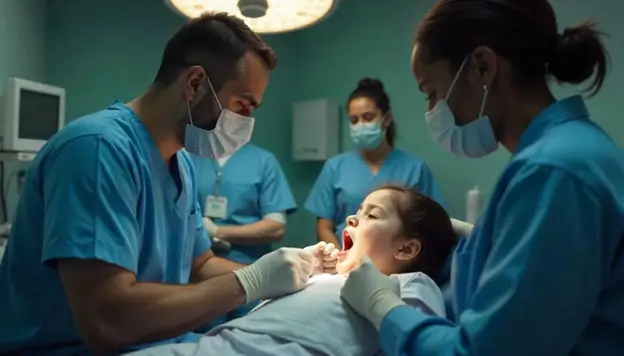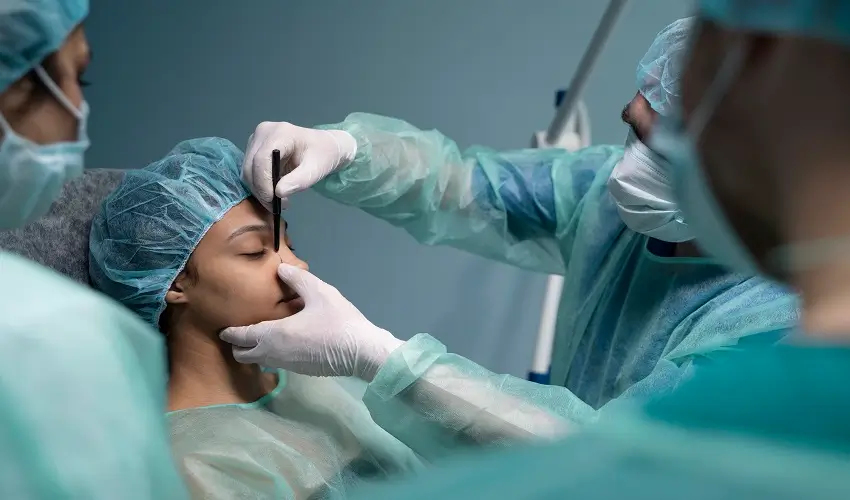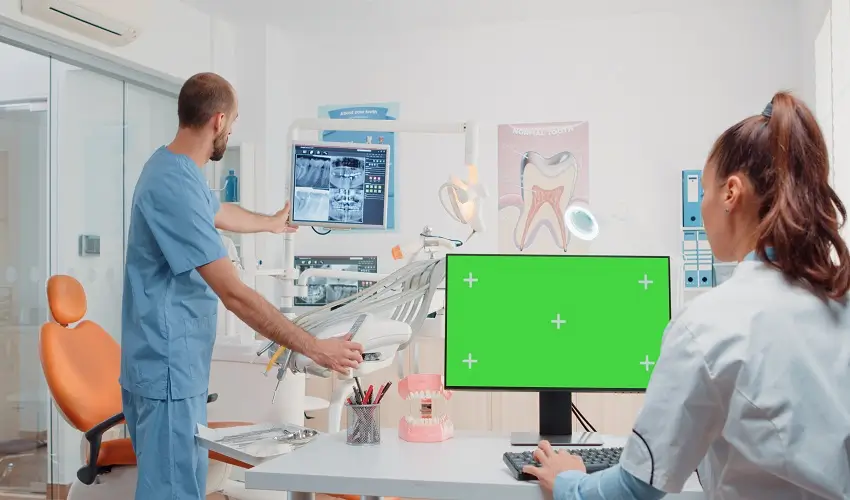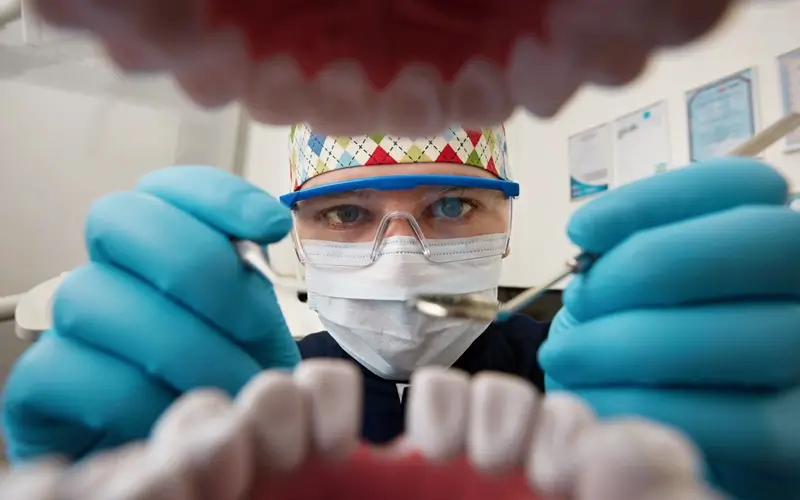Dental emergencies tend to happen at the worst possible time and are an absolute nightmare. The worst part is that trying to explain the pain to someone who hasn’t been through it or seen it becomes another hassle to deal with. One minute you’re biting into your lunch, and the next moment you may find yourself in the office bathroom, holding your jaw in pain.
As helpless as the situation might seem, knowing what to do in those first few minutes can make a huge difference. So, let us take a look at five common dental emergencies we see all the time here at Aura Dentists, and recommend what you can do about them before reaching the clinic.
1- Severe Toothache Or Swelling
This one’s pretty common, and we see it all the time. A drunk night out, a cricket ball to the face, sometimes even a sneaky little popcorn kernel—they all can cause pain. Sometimes, the pain is sharp, throbbing, or combined with swelling. Swelling might also potentially indicate an infection. If you notice this, here is what you do:
- Rinse your mouth gently with warm salt water.
- Take paracetamol or ibuprofen for pain relief.
- Apply a cold compress on the cheek near the sore area to help reduce swelling.
- Try to avoid chewing on that side of your mouth.
Even a small chip can open the door to bacteria and infection, so don’t wait it out. Visit and trust your dentist to ensure dental health and sort out any issue before it becomes a bigger problem.
2- Knocked-Out Tooth
Here’s a fun fact: If a tooth has been knocked out clean, it can still potentially be saved if you act fast! Hurry and collect it carefully, trying your best to only touch the crown (the top bit), and rinse it with milk or saline if it’s dirty. Rinse—no scrubbing. Place it in milk and call your dentist ASAP. The ideal time is within an hour. Time is ticking, so the quicker you act, the better your chances of saving it.
3- Lost Filling Or Crown
Fillings and crowns last a long time, but not forever; nothing lasts forever. They can come loose if there is decay underneath or if they’ve just been worn down over the years.
In case this happens to you or someone in front of you, the thing to do first is to secure the crown or filling. Use temporary dental cement (you’ll find it at most chemists) to cover the exposed tooth if it’s uncomfortable, and see your doctor ASAP.
Delays can result in decay or infection as your tooth is left exposed.
4- Dental Abscess
Abscesses are no joke, and one really shouldn’t count on them to go away on their own either. They are the result of a bacterial infection that happens in or around the tooth. It’s when pus builds up because bacteria got deep into your tooth or gums and your body is trying to fight it off. Now, that may be a good thing—good job, body—but it can get real painful real quick.
If you start to notice swelling, a throbbing ache, fever, or a foul taste in your mouth, you must:
- Take paracetamol or ibuprofen to manage discomfort.
- Use a cold compress if there’s swelling.
- Get to a dentist urgently. Don’t try to wait this one out.
Untreated abscesses can lead to serious health issues, so get help early. It can get worse and spread to your jaw, neck, or even your bloodstream if you wait too long. That’s where it stops being a “tooth problem” and turns into a “hospital problem.”
5- Soft Tissue Injuries
In dental terms, soft tissue injuries refer to any damage to the non-tooth parts of your mouth. So, that includes gums, tongue, lips, cheeks, or the inside of your mouth. Common types of soft tissue injuries include:
- Cuts or lacerations from biting yourself, accidents, etc.
- Bruising, which can be caused by trauma like getting hit in the mouth.
- Burns due to hot foods or chemicals.
- Abrasions from rough brushing.
- Ulcers from stress, irritations, or infections like cold sores.
They result in pain, swelling, and even bleeding sometimes, so if you notice any of these:
- Rinse your mouth gently with a saltwater solution.
- Apply pressure to stop any bleeding using clean gauze or a soft cloth.
- Use an ice pack outside the mouth to reduce swelling.
- If bleeding doesn’t stop after 15–20 minutes, or if the injury is large, see a dentist right away.
Soft tissue heals quickly with proper care, but it still deserves attention. Infection can develop if it’s ignored.
Final Words
Dental emergencies catch most people off guard. Whether it’s sudden pain, a broken tooth, or unexpected swelling, quick thinking and a bit of basic knowledge can go a long way. Staying calm, knowing what steps to take, and acting swiftly can help prevent a small problem from becoming something bigger. Trust your dentist—it is crucial for your dental health.





